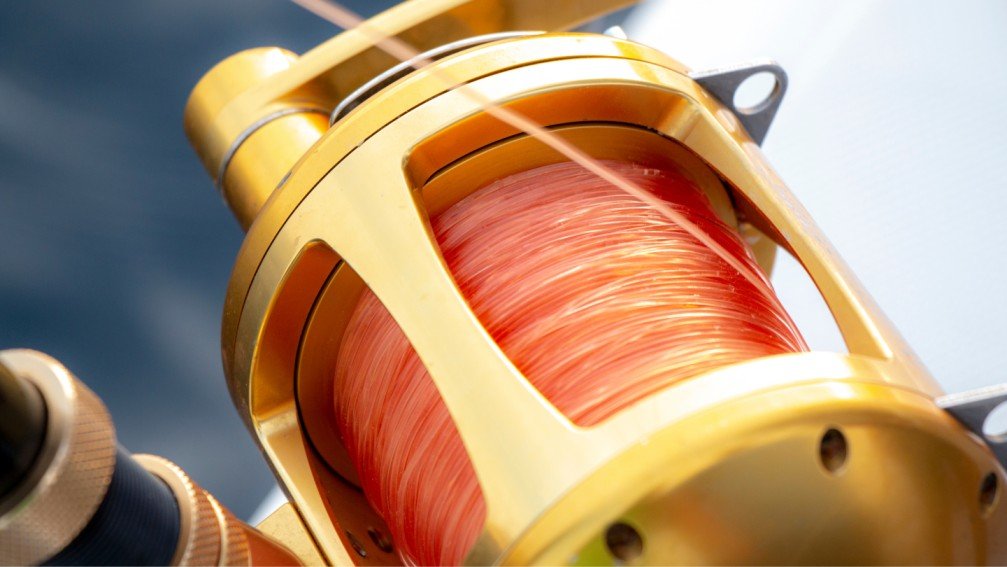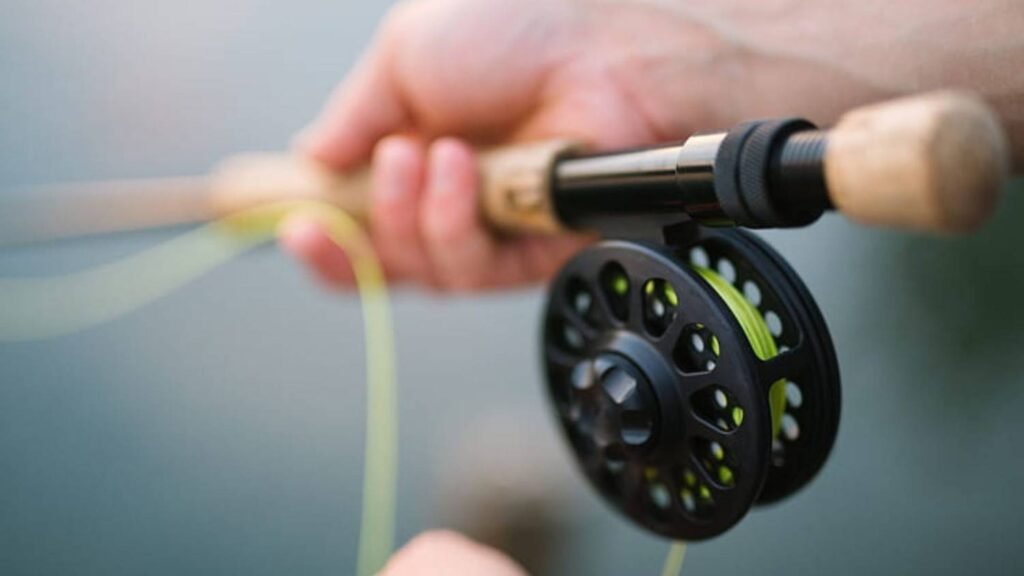Copolymer fishing line is made from two or more different materials, offering improved strength and sensitivity. Monofilament fishing line is made from a single type of plastic, providing flexibility and ease of use.
Copolymer and monofilament fishing lines are popular choices among anglers, each offering distinct advantages. Copolymer lines are crafted by combining multiple polymers, enhancing their durability and performance. They are known for their lower stretch, better abrasion resistance, and reduced visibility in water.
Monofilament lines, on the other hand, are created from a single polymer, making them more flexible and easier to handle. They are favored for their knot strength and affordability. Understanding the differences between these lines can help anglers choose the best option for their specific fishing needs.
Fishing lines are essential for every angler. They connect the angler to the fish. Without a strong line, catching fish is hard. There are many types of fishing lines. Each type has its own strengths and weaknesses.
Types Of Fishing Lines
Fishing lines come in various types. The most common types are:
- Monofilament
- Copolymer
- Braided
- Fluorocarbon
Monofilament lines are made from a single fibre. They are stretchy and flexible. Copolymer lines are made from two or more materials. They offer better strength and sensitivity.
Importance In Fishing
The right fishing line can make a big difference. It affects casting distance, lure action, and hook setting. A good line should be strong, durable, and easy to handle.
Monofilament lines are popular for beginners. They are easy to use and affordable. Copolymer lines are preferred by experienced anglers. They provide better performance in challenging conditions.
Copolymer Fishing Line
Fishing enthusiasts often choose copolymer fishing lines. They offer unique benefits that enhance the fishing experience. The copolymer line is a type of fishing line that combines two or more polymers. This blend gives it special properties.
Composition
The composition of a copolymer fishing line involves two or more different polymers. These polymers are mixed together during the manufacturing process. This combination enhances the line’s overall performance. Copolymer lines are designed to be stronger and more durable than monofilament lines. The blend of materials results in a line that has better resistance to abrasions and UV rays.

P-Line C21 Copymer Filler Spool
Strength And Flexibility
Strength is a key feature of copolymer fishing lines. They can handle more weight without breaking. This makes them suitable for catching larger fish. The flexibility of copolymer lines is another significant advantage. They stretch less than monofilament lines. This reduced stretch provides better sensitivity. Anglers can feel bites more easily, which improves hook-setting performance.
Here is a comparison table to summarize the key points:
| Feature | Copolymer Fishing Line |
| Composition | Two or more different polymers |
| Strength | Higher strength handles more weight |
| Flexibility | Less stretch, better sensitivity |
| Durability | Better resistance to abrasions and UV rays |
In summary, copolymer fishing lines are strong, flexible, and durable. They offer a great combination of features for anglers.
Monofilament Fishing Line
Monofilament fishing line is popular among anglers. It offers versatility and ease of use. This type of fishing line is ideal for beginners and experts alike. Let’s explore its key characteristics.
Material
Monofilament fishing line is made from a single strand of nylon. This makes it smooth and flexible. The manufacturing process involves melting and extruding the nylon. This results in a uniform and consistent line. It comes in different colors to suit various fishing conditions. The transparent option is great for clear water, while colored lines are easier to see.

Berkley Trilene XL Monofilament Fishing Line
Durability And Stretch
Monofilament lines are known for their durability. They can withstand abrasions from rocks and debris. This makes them ideal for rough fishing environments. Stretch is another key feature of monofilament lines. They have a significant amount of stretch compared to other lines. This stretch helps absorb shocks from fighting fish. It reduces the risk of the line breaking during intense battles.
| Feature | Monofilament Fishing Line |
| Material | Single strand of nylon |
| Durability | High resistance to abrasions |
| Stretch | Significant stretch to absorb shocks |
Monofilament fishing lines offer several advantages. They are affordable and easy to handle. The stretch feature makes them forgiving and beginner-friendly. They are available in a range of diameters and strengths. This versatility allows anglers to choose the right line for their needs.
Performance In Water
The performance of a fishing line in water can make or break your fishing trip. Different types of fishing lines, like copolymer and monofilament, have unique characteristics. These characteristics affect their visibility and buoyancy in water. Below, we’ll explore how each type performs in these aspects.
Visibility
Visibility is crucial when choosing a fishing line. Fish can get scared easily if they see the line. Copolymer fishing lines are less visible underwater. They often have a refractive index closer to water, making them harder to detect.
Monofilament lines are more visible. They reflect more light underwater, which can spook fish. This makes copolymer lines a better choice in clear waters.
Buoyancy
Buoyancy affects how the line behaves in water. Copolymer lines usually have less buoyancy. They sink faster, which is good for deep-water fishing. This helps the lure reach the desired depth quickly.
Monofilament lines have higher buoyancy. They tend to float or sink slowly. This makes them ideal for top-water fishing. The line stays near the surface, making it easier to manage.
| Feature | Copolymer | Monofilament |
| Visibility | Low | High |
| Buoyancy | Low | High |
Knot Strength
Understanding the knot strength of fishing lines is crucial for every angler. It determines how well the line holds when tied to hooks or lures. Let’s dive into the differences between copolymer and monofilament fishing lines under this aspect.
Holding Capacity
Copolymer fishing lines generally have better holding capacity. Their structure allows them to distribute tension more evenly. This minimizes weak points in the knot.
On the other hand, monofilament lines are single-strand lines. They tend to have less consistent holding capacity. This can cause knots to slip under heavy pressure.
| Fishing Line Type | Holding Capacity |
| Copolymer | High |
| Monofilament | Moderate |
Ease Of Tying
Tying knots with monofilament lines is generally easier. Their single-strand nature makes them more flexible. This flexibility allows for simpler and quicker knot formation.
In contrast, copolymer lines can be a bit stiffer. This stiffness can make them harder to tie. Anglers might need more practice to get the perfect knot.
- Monofilament Lines: Easier to tie
- Copolymer Lines: Require more skill
Abrasion Resistance
Abrasion resistance is a crucial factor in choosing fishing lines. It determines how well the line withstands wear from rocks, debris, and fish teeth. Both copolymer and monofilament fishing lines have their own strengths and weaknesses in this area.
Wear And Tear
Monofilament fishing lines are made from a single strand of nylon. They are more prone to wear and tear. These lines can easily get nicked or frayed. This makes them less durable in rocky or harsh environments.
Copolymer fishing lines are made from two or more polymers. They offer better abrasion resistance. These lines are tougher and more resilient to nicks and cuts. This makes them ideal for rough fishing conditions.
Longevity
The longevity of a fishing line is important for anglers. Monofilament lines tend to degrade faster due to UV exposure and water absorption. Frequent replacement is often necessary.
Copolymer lines are more resistant to UV rays and water absorption. This extends their lifespan significantly. Anglers can use them for longer periods without replacement.
| Feature | Monofilament | Copolymer |
| Material | Single strand of nylon | Multiple polymers |
| Abrasion Resistance | Lower | Higher |
| UV Resistance | Lower | Higher |
| Longevity | Shorter | Longer |
Choosing the right fishing line depends on your fishing environment. If you fish in rocky areas, a copolymer line might be better. For general use, monofilament lines are still a great option.
Cost Comparison
Understanding the cost differences between copolymer and monofilament fishing lines is crucial for anglers. It helps them make informed purchasing decisions. This section will break down the cost aspects.
Price Points
Monofilament fishing lines are generally cheaper than copolymer lines. They are widely available and have a lower production cost. A 300-yard spool of monofilament can cost between $5 and $10. In contrast, a similar length of copolymer fishing line ranges from $10 to $20.
| Type | Price Range (300 yards) |
| Monofilament | $5 – $10 |
| Copolymer | $10 – $20 |
Value For Money
While monofilament lines are less expensive, copolymer lines offer better durability. They are more resistant to abrasion and UV damage. This means you might replace monofilament lines more frequently. Copolymer lines can save money in the long run.
Here are some key points to consider:
- Monofilament is cheaper but might need frequent replacement.
- Copolymer has a higher upfront cost but lasts longer.
- Durability and longevity can affect overall value for money.
Choosing between these two depends on your budget and fishing needs.
Best Uses
Understanding the best uses of copolymer and monofilament fishing lines can improve your fishing experience. Each type of fishing line has specific advantages, making them ideal for different scenarios.
Fishing Conditions
Fishing lines perform differently based on the conditions you’re fishing in. Monofilament fishing line is great for a variety of fishing conditions. It handles well in both freshwater and saltwater. It also has good abrasion resistance, which helps in rocky environments.
On the other hand, copolymer fishing line excels in clear water conditions. It has less visibility than monofilament. This makes it suitable for catching fish in clear lakes and streams.
Target Species
Choosing the right fishing line also depends on your target species. Monofilament line is versatile and works well for many fish species. It is ideal for bass, trout, and catfish. The line’s stretch helps absorb shocks from sudden fish movements.
Copolymer line is better for catching more sensitive fish. It has less stretch and higher sensitivity. This makes it perfect for targeting fish like pike, walleye, and perch. The line’s strength and reduced visibility are also beneficial.
| Fishing Line | Ideal Conditions | Target Species |
| Monofilament | Freshwater, saltwater, rocky areas | Bass, trout, catfish |
| Copolymer | Clear water, low visibility | Pike, walleye, perch |
Expert Recommendations
Choosing between copolymer and monofilament fishing lines can be tricky. Experts have weighed in to provide their insights. Here’s what the professionals and users recommend.
Professional Opinions
Experts offer valuable advice on fishing line choices. Their insights can help you decide which line suits your needs best.
| Aspect | Copolymer | Monofilament |
| Strength | Higher tensile strength | Good strength but less than copolymer |
| Flexibility | More flexible | Moderately flexible |
| Visibility | Less visible underwater | More visible underwater |
Experts suggest copolymer for higher strength and flexibility. Monofilament is preferred for its ease of use and affordability.
User Reviews
Users share their real-world experiences. Their feedback helps understand practical use cases.
- Copolymer users appreciate its durability and low visibility.
- Monofilament users love its ease of knot tying and price.
- Some anglers find monofilament better for beginners.
- Experienced fishermen often prefer copolymer for challenging conditions.
Both fishing lines have their own merits. Your choice depends on your specific needs and fishing conditions.
Choosing between copolymer and monofilament fishing lines depends on your fishing needs. Copolymer offers better strength and less stretch. Monofilament is more affordable and easier to handle. Understanding these differences helps you make an informed decision. Select the right fishing line to enhance your fishing experience.



